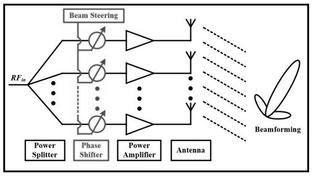Primary Radar vs. Secondary Radar: Key Differences Explained
Advertisement
This article breaks down the core distinctions between primary radar and secondary radar systems. Let’s dive in!
Primary Surveillance Radar (PSR) is commonly referred to as primary radar, while Secondary Surveillance Radar (SSR) is known as secondary radar.
Primary Radar (PSR)

Figure-1 depicts the primary radar principle of operation.
As illustrated in Figure-1, a Primary Surveillance Radar (PSR) transmits electromagnetic (EM) energy towards a target, such as an aircraft. The aircraft acts as a passive reflector, bouncing the EM energy back towards the primary radar antenna. The radar then analyzes the reflected signal to determine the target’s location and speed.
- Example of primary radar: ATC radar, used in Air Traffic Control.
Secondary Radar (SSR)

Figure-2 depicts the secondary radar principle of operation.
Figure-2 showcases the operation of Secondary Surveillance Radar (SSR). Similar to primary radar, Secondary Surveillance Radar (SSR) transmits EM signal energy towards a target such as an aircraft. However, in this case, the aircraft acts as an active participant. The aircraft houses a transponder, which, upon receiving the radar signal, responds by transmitting a coded reply signal back.
This response contains valuable information like altitude and a unique identification code. The secondary radar receives pulses and the accompanying digital data from the aircraft transponder. These transponders are especially crucial for establishing flight identity in military applications.
- Example of secondary radar: IFF Radar, which stands for Identification Friend or Foe Radar. This is commonly used in military applications.
Advertisement
 RF
RF

